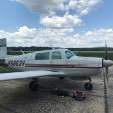Aircraft jacking using a weighted tail stand Vs using a cable winch
-
Members Online
- eman1200
- Marc_B
- Matt103187
- ohdub
- dkkim73
- dennis riz
- EricJ
- exM20K
- MikeOH
- ProtoFly
- SoccerCA
- NickG
- Sabremech
- hammdo
- Fritz1
- Red Leader
- Nippernaper
- N201MKTurbo
- 201Mooniac
- larryb
- KER
- GMBrown
- 1980Mooney
- Ragsf15e
- Utah20Gflyer
- Robert C.
- Skyland
- varlajo
- phxcobraz
- takair
- Fly Boomer
- dzeleski
- NotarPilot
- aviatoreb
- Ivan
- Hank
- Alan Fox


Recommended Posts
Join the conversation
You can post now and register later. If you have an account, sign in now to post with your account.